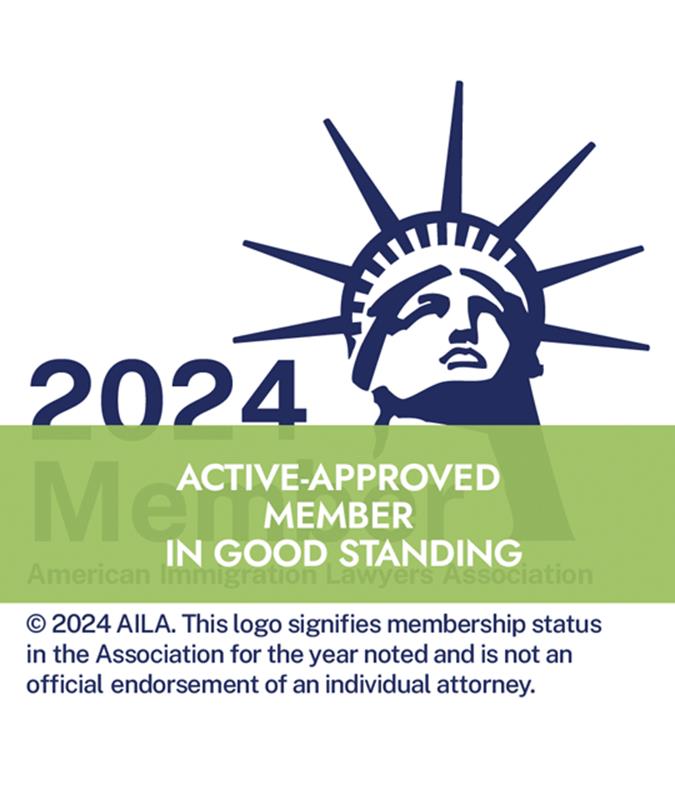H-1B Visa Immigration Services
The laws regarding the H-1B visa are in constant flux and applicants seriously considering this category as a means of working in the US on a temporary basis should stay informed and updated as much as possible. Since an applicant’s circumstances and the circumstances of his/her dependent family members may require special attention, the following information is not tailored to any one individual but provides general information about this category.
The H-1B visa allows foreign workers to enter the US and work in a variety of fields ranging from architecture and engineering to health and medicine. The H-1B visa offers a wide range of employment possibilities and is a logical first step toward permanent immigration.
In order to qualify for H-1B classification, the applicant must have at least a U.S. bachelors degree or its equivalent AND the job sought must require at least a bachelors degree or its equivalent. Because this is not a self-petitioning category, the applicant must have a sponsoring employer in the U.S.
The spouse and unmarried children below the age of 21 are allowed to accompany or join the H-1B worker as H-4 dependents. However, they cannot work unless they qualify for a work visa. H-4 dependents can enroll and attend schools in the U.S. without obtaining a student visa.
The current law limits to 65,000 the number of aliens who may be issued a visa or otherwise provided H-1B status each fiscal year. In addition, excluded from the ceiling are all H-1B non-immigrants who work at (but not necessarily for) universities and non-profit research facilities. This means that contractors working at, but not directly employed by the institutions may be exempt from the cap. Free Trade Agreements allow a carve-out from the numerical limit of 1,400 for Chilean nationals and 5,400 for Singapore nationals. Laws also exempt up to 20,000 foreign nationals holding a master’s or higher degree from U.S. universities from the cap on H-1B visas. The U.S. Department of Labor (DOL) is responsible for ensuring that foreign workers do not displace or adversely affect wages or working conditions of U.S. workers.
While an employer is not required to advertise the position before hiring an H-1B non-immigrant pursuant to the H-1B visa approval, the employer is required to notify the employee representative about the LCA (Labor Condition Application) or if there is no such representation then the employer is required to publish that LCA at the workplace and the employer’s office.
Employers must attest that wages offered are at least equal to the actual wage paid by the employer to other workers with similar experience and qualifications for the job in question, or alternatively, pay the prevailing wage for the occupation in the area of intended employment, whichever is greater. By signing the LCA, the employer attests that: prevailing wage rate for area of employment will be paid; working conditions of position will not adversely affect conditions of similarly employed American workers; place of employment not experiencing labor dispute involving a strike or lockout; and that the foreign employee will be given benefits comparable to those offered to its other workers with similar jobs. The law requires H-1B workers to be paid the higher of the prevailing wage for the same occupation and geographic location, or the same as the employer pays to similarly situated employees. Other factors, such as age and skill were not permitted to be taken into account for the prevailing wage. Congress changed the program in 2004 to require the Department of Labor to provide four skill-based prevailing wage levels for employers to use. This is the only prevailing wage mechanism the law permits that incorporates factors other than occupation and location.
The approval process for these applications is based on employer attestations and documentary evidence submitted. The employer is advised of their liability if they are replacing a US worker.
The taxation of income for H-1B employees depends on whether they are categorized for tax purposes as either non-resident aliens or resident aliens. A non-resident alien for tax purposes is only taxed on income from the United States, while a resident alien for tax purposes is taxed on income from both inside and outside the United States.The classification is determined based on the “substantial presence test”: If the substantial presence test indicates that the H-1B visa holder is a resident, then income taxation is like any other U.S. person and may be filed using Form 1040 and the necessary schedules; otherwise, the visa-holder must file as a non-resident alien using tax form 1040NR or 1040NR-EZ; he or she may claim benefit from tax treaties if they exist between the United States and the visa holder’s country of citizenship.
Persons who are in their first year within the United States may choose to be considered a resident for taxation purposes for the entire year, and must pay taxes on their worldwide income for that year. This “First Year Choice” is described in IRS Publication 519 and can only be made once in a person’s lifetime.
A spouse, regardless of visa status, must have a valid Individual Taxpayer Identification Number (ITIN) or Social Security number (SSN) in order to be included on a joint tax return with the H-1B holder.The rules to file taxes for H-1B holders may be complex, depending on the individual situation. Besides consulting a professional tax preparer knowledgeable about the rules for foreigners, the IRS Publication 519, U.S. Tax Guide for Aliens, may be consulted.
In theory, the maximum duration of the H-1B visa is six years (ten years for exceptional Defense Department project-related work). H-1B holders who want to continue to work in the U.S. after six years, but who have not obtained permanent residency status, must remain outside of the U.S. for one year before reapplying for another H-1B visa.
There are generally two exceptions to the six-year duration of the H-1B visa:
If a visa holder has submitted an I-140 immigrant petition or a labor certification prior to their fifth year anniversary of having the H-1B visa, they are entitled to renew their H-1B visa in one-year or three-year increments until a decision has been rendered on their application for permanent residence.
If the visa holder has an approved I-140 immigrant petition, but is unable to initiate the final step of the green card process due to their priority date not being current, they may be entitled to a three-year extension of their H-1B visa. This exception originated with the American Competitiveness in the Twenty-First Century Act of 2000.
H-1B Visa Immigration Steps
Since the H-1B visa requires a U.S. sponsor, the applicant must seek a U.S. employer who is willing to hire the applicant temporarily, pay the applicant the prevailing wage for the offered position and file the petition and supporting documents with the CIS (Citizenship and Immigration Services).
The petition process begins with the sponsoring employer filing a Labor Condition Application (LCA) with the Department of Labor after obtaining a prevailing wage for the position. Upon obtaining an approved LCA the employer files the petition with Immigration. The petition must be filed with documentation that shows the job is a professional or specialty occupation and that the H-1B applicant is qualified for the position.
The sponsoring employer must file Form I-129 (Petition for Non-immigrant worker) and H supplement with the CIS office having jurisdiction over the place of employment. The filing fee for an H-1B petition is $310. All employers must complete and file Form I-129W with the Form I-129 petition.
If either the employer or the applicant wishes to expedite the H-1B petition so an initial determination is made within 15 days of the filing, it may request premium processing for an additional fee of $1225. The request is made by completing Form I-907.
After approval, Immigration will send Form I-797 (Notice of Action) to the employer. The employer then notifies the applicant and sends all the required documents to the applicant who can then apply for his H-1B visa at the U.S. consulate in his home country.
Documents for H-1B Employment Immigration
Both the applicant and the employer are required to submit documents for the H-1B visa.
The applicant is required to submit the following documents when applying for an H-1B visa abroad:
- A completed visa application (Form DS 156) with one recent photograph, 1 inches square (37mm x 37mm), of each applicant, with the entire face visible. The picture should be taken before a light background and without head covering
- A passport valid for travel to the United States for at least six months longer than your intended visit. Form I-797 (Notice of Action)
- Copy of the approved Labor Condition Application (LCA) Copy of the filed and approved I-129H petition and supporting documentation which should include: the applicants academic record, education evaluation verifying that the applicants foreign academic record is equivalent to a US bachelors degree, resume, recommendation letters from previous employers (if required), proof of any membership in relevant trade or professional organizations, and a letter from your employer detailing the job and its requirements.
- Current or updated letter from the employer confirming its intention to hire the applicant according the terms and conditions on its approved petition.
- Employers most recent financial records or tax returns.
It is the employers responsibility to send the items listed in numbers 3 through 7 above to the applicant.
Visa fees associated with obtaining the H-1B visa vary from country to country.
H-1B Visa LINKS
- USCIS (U.S. Citizenship & Immigration Services) recently issued a Memoranda dated 8 Jan 2010. The memoranda effectively states that there must be a clear “employee employer relationship” between the petitioner (employer) and the beneficiary (potential Visa holder). It simply outlines what the employer must do to be considered in compliance as well as putting forth the documentation requirements to back up the employer’s assertion that a valid relationship exists.
- I-129, Petition for a Nonimmigrant Worker
Contact Neelam Bhardwhaj for H-1B Visa assistance today!



